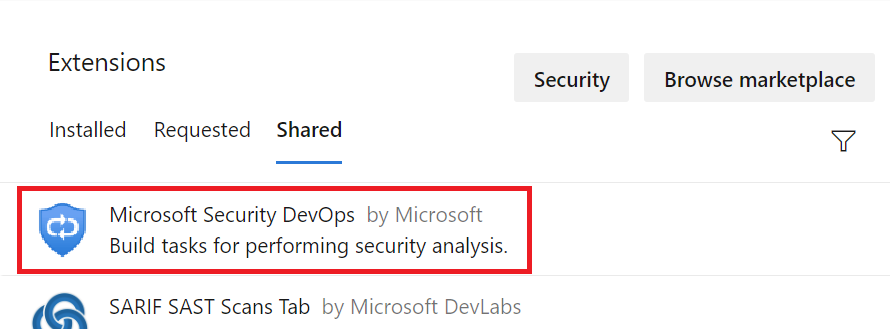Microsoft Security DevOps는 정적 분석 도구를 개발 수명 주기에 통합하는 명령줄 애플리케이션입니다. Microsoft Security DevOps는 최신 버전의 정적 분석 도구(SDL/보안 및 규정 준수 도구 포함)를 설치, 구성 및 실행합니다. Microsoft Security DevOps는 여러 환경에서 결정적 실행을 가능하게 하는 이식 가능한 구성으로 데이터 기반입니다.
Microsoft Security DevOps는 다음 오픈 소스 도구를 사용합니다.
| 이름 | 언어 | 라이선스 |
|---|---|---|
| AntiMalware | 맬웨어를 검사하고 맬웨어가 검색되면 빌드를 중단시키는 Windows의 엔드포인트용 Microsoft Defender의 Windows 맬웨어 방지 보호입니다. 이 도구는 기본적으로 Windows 최신 에이전트를 검사합니다. | 오픈 소스 아님 |
| Bandit | Python | Apache License 2.0 |
| BinSkim | Binary--Windows, ELF | MIT 라이선스 |
| ESlint | JavaScript | MIT 라이선스 |
| IaCFileScanner | Terraform, CloudFormation, ARM 템플릿, Bicep | 오픈 소스 아님 |
| 템플릿 분석기 | ARM 템플릿, Bicep | MIT 라이선스 |
| Terrascan | Terraform(HCL2), Kubernetes(JSON/YAML), Helm v3, Kustomize, Dockerfiles, Cloud Formation | Apache License 2.0 |
| Trivy | 컨테이너 이미지, IaC(Infrastructure as Code) | Apache License 2.0 |
참고 항목
2023년 9월 20일부터 Azure DevOps용 MSDO(Microsoft 보안 DevOps) 확장 내의 비밀 검사(CredScan) 도구가 더 이상 사용되지 않습니다. MSDO 비밀 검사는 Azure DevOps용 GitHub 고급 보안으로 바뀝니다.





